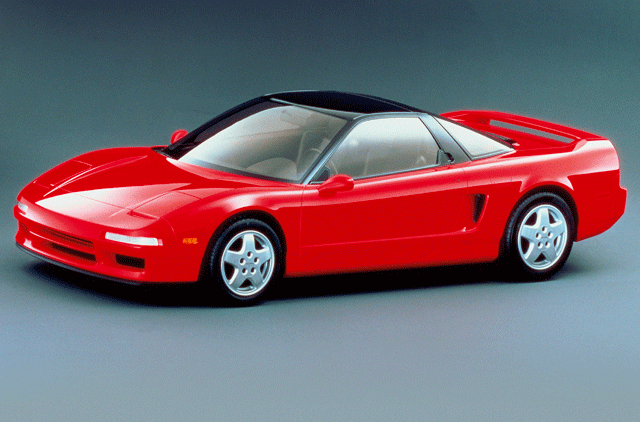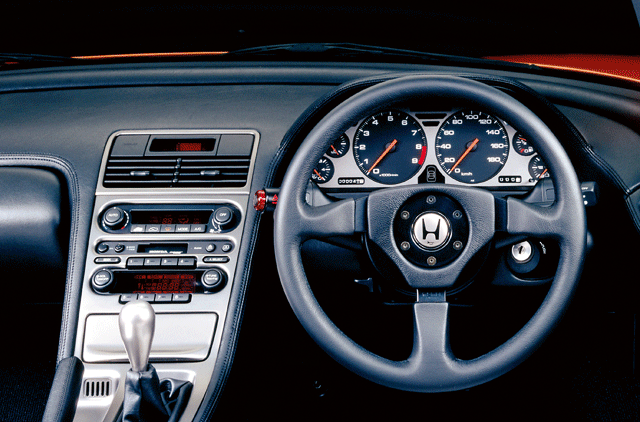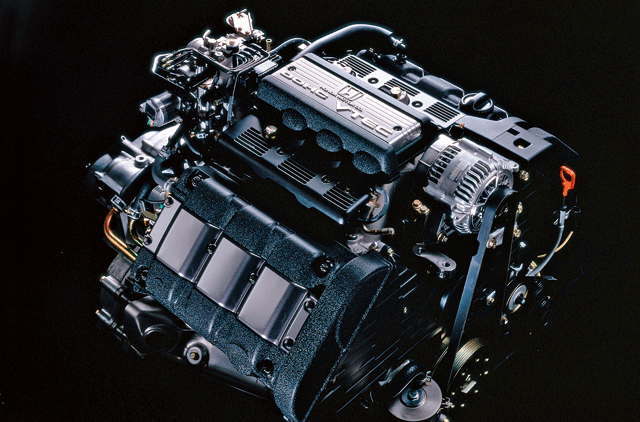
Supercar manufacturers had it easy back in the day. Slap together the most hardcore components you can find lying around and pull a bhp figure out of the delivery boy's thumb. Consequently, most supercars were driven on the weekends and even then just around the block, because of course the temperature gauge would spike quicker than the fuel gauge would plummet.
Today things couldn't be further from that, with Lambos, Ferraris and Audi R8s driven as dailies, racking up mileages into triple digits and requiring servicing only every 15,000km. The single biggest reason why they made these massive advancements in reliability and usability, is Honda's NSX (New Sportscar eXperimental) — the first truly accessible supercar.
Ever since Honda's car seeds were planted with the S600 sportscar, Soichiro's engineers dreamt of a proper sportscar, a supercar rather. Honda has always been a racing company, from its initial motorcycle interests to its utter domination of Formula 1 at the time. The engineers set simple targets, but ones which were highly complex to achieve. The intention of the NSX was to make a handbuilt, exotic, mid-engined car that would set new benchmarks in performance, refinement, drivability and reliability. Basically, they were creating an entirely new genre of car. And it necessitated pioneering technologies in every department, if Honda's boffins were to really meet their 5kg/bhp objective.
A naturally-aspirated 3.0-litre V6 was chosen for its compact dimensions, low weight and free-revving nature. Initially producing 270bhp, the DOHC 24-valve featured Honda's breakthrough VTEC system and titanium connecting rods; the first production car to use them. To compete with V8 supercars from Italy and America's big-block beasts, Honda focused on shedding weight in order to meet its 1,365kg objective. The answer lay in aluminium, as the NSX became the first production car to be entirely constructed (chassis, body, engine) from the alloy.
Each NSX was hand-assembled in a dedicated factory in Tochigi, which churned out a maximum of 25 units per day. Aesthetically, the designers focused on a cab-forward layout, freeing up space for the powerhouse and cargo room, as well as ensuring excellent visibility all round. Taking inspiration from the F16 jet fighter, Honda was immediately on to a classic, with perfect proportions, great aerodynamic efficiency (fuel economy and performance benefited) and class-leading active and passive safety.
The painstaking development process, which began in 1984, was most obviously evident in the suspension design, which allowed for high lateral adhesion, super response and didn't ask too much of its driver either. Every suspension component was made from aluminium, with the basic configuration similar to that of an F1 car (doubtless due to Ayrton Senna's considerable set-up involvement), meaning double wishbones with coilovers and anti-roll bars front and rear.
Once unleashed on the world in 1989 at Chicago's Auto Show, it took another year for the NSX to become showroom reality. Petrolheads went nuts, with some of the world's most prominent motoring publications going gaga over the NSX in its first year of production. Some even immediately named it the best sportscar ever built, while almost everyone bestowed it with all the awards they could.
Tochigi was in full-attack mode for 15 years, and only went to sleep in 2005 as the final NSX rolled off the assembly line. The world died a little that day...
FACTS
Car 1990 Honda NSX
Engine 3.0-litre V6270bhp @ 7,300rpm
285Nm @ 6,500rpm
Gearbox Five-speed manual
0-100kph 6.0sec
Top speed 270kph
Weight 1,365kg
Fuel system PGM-Fi













